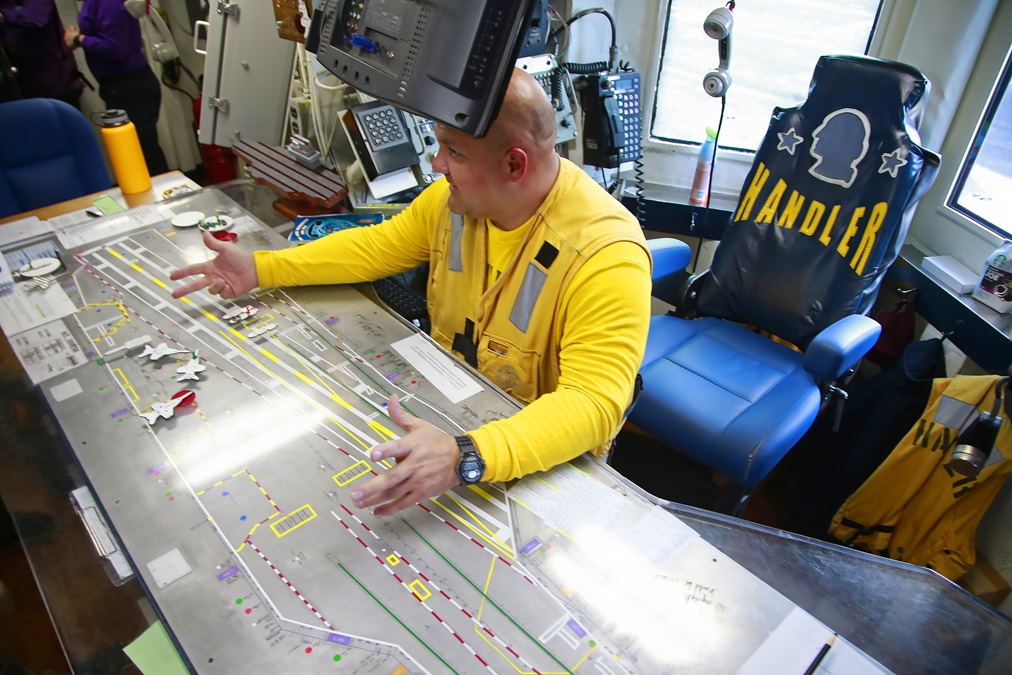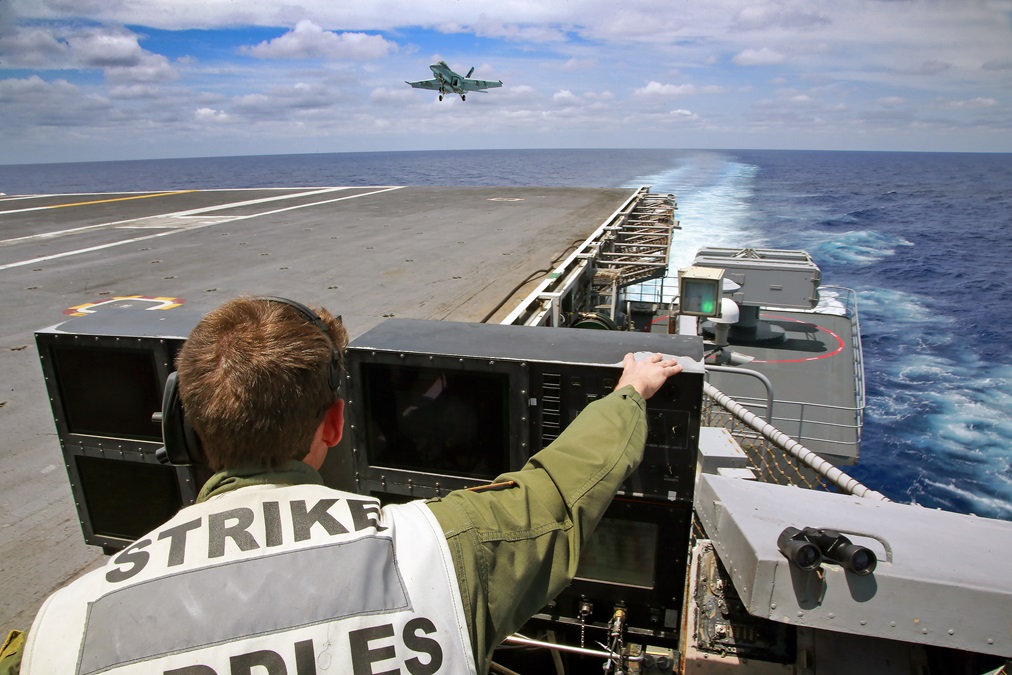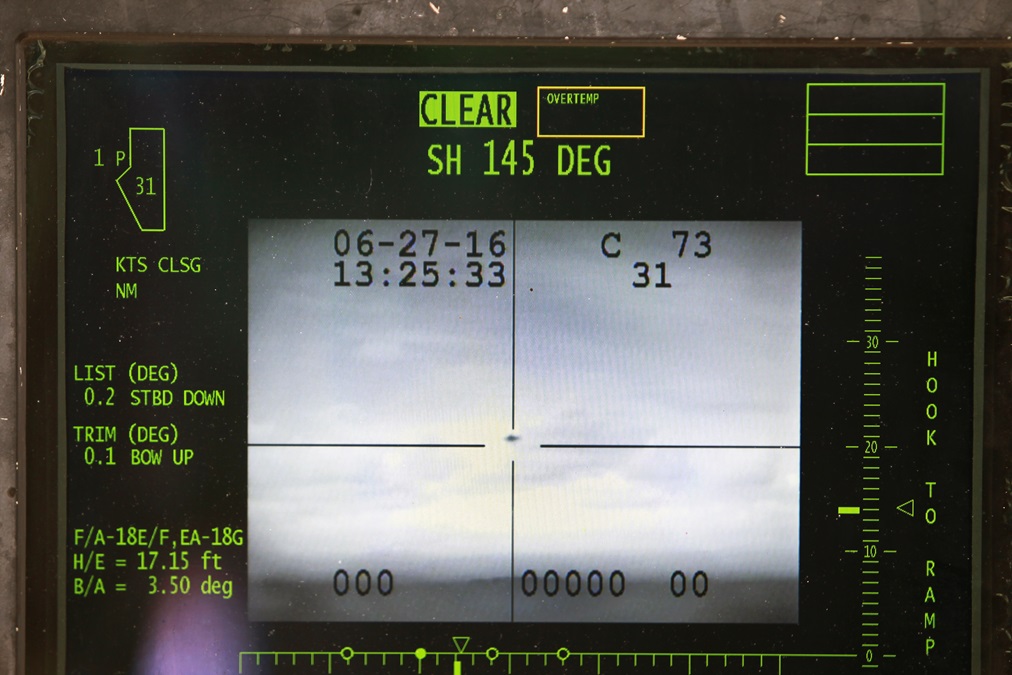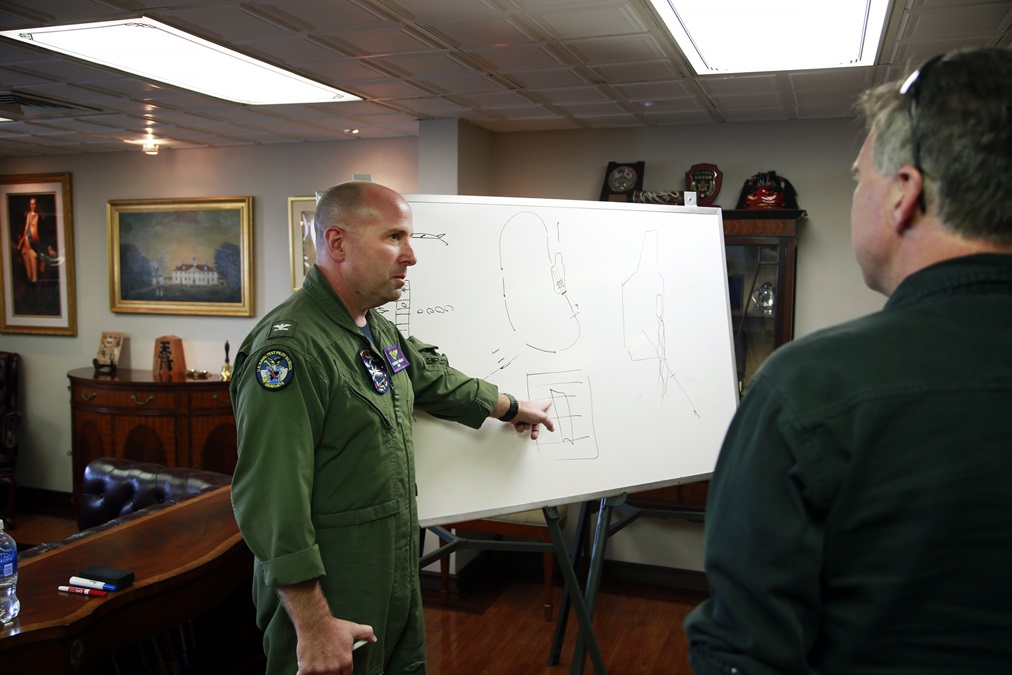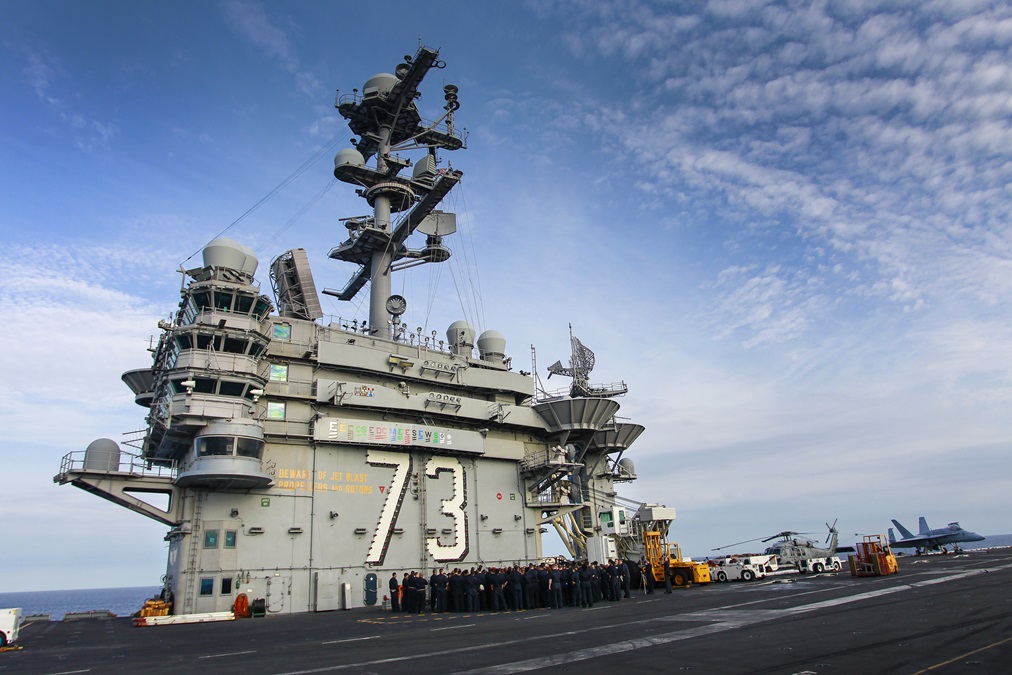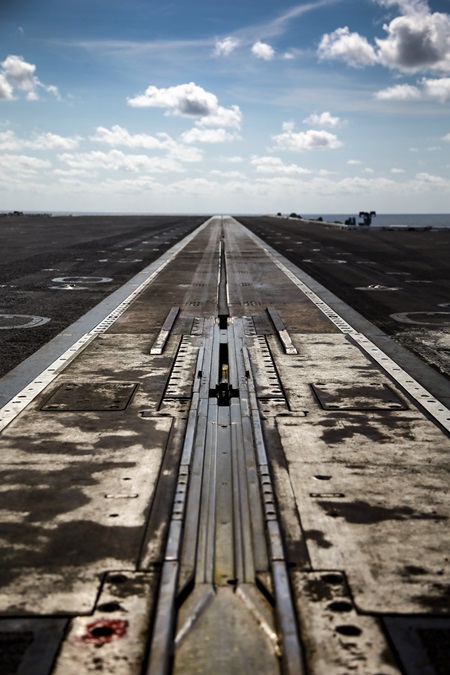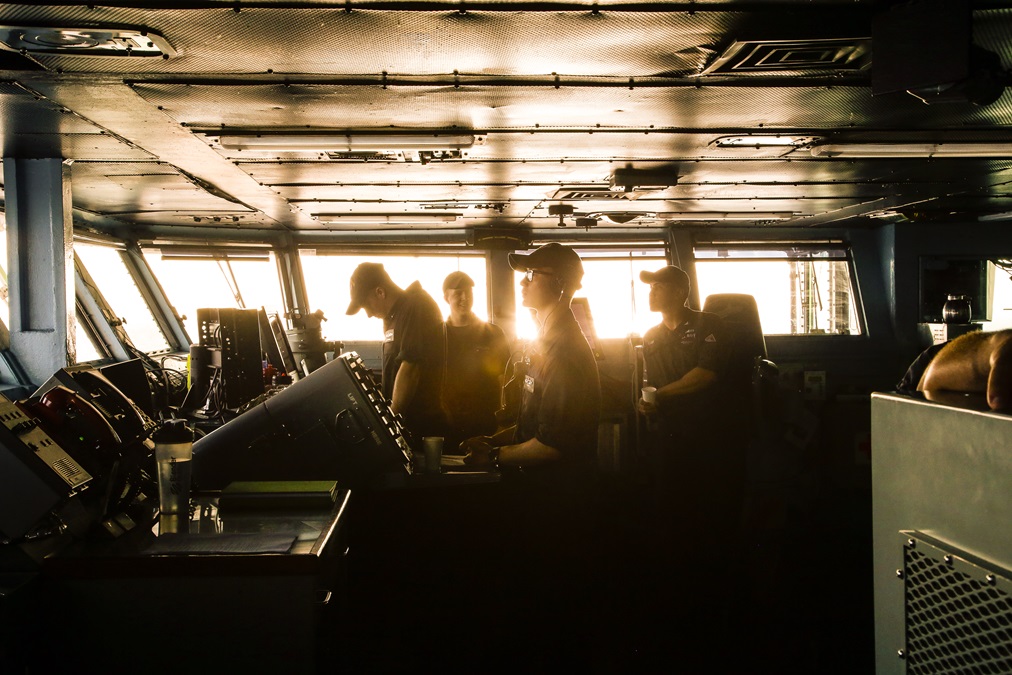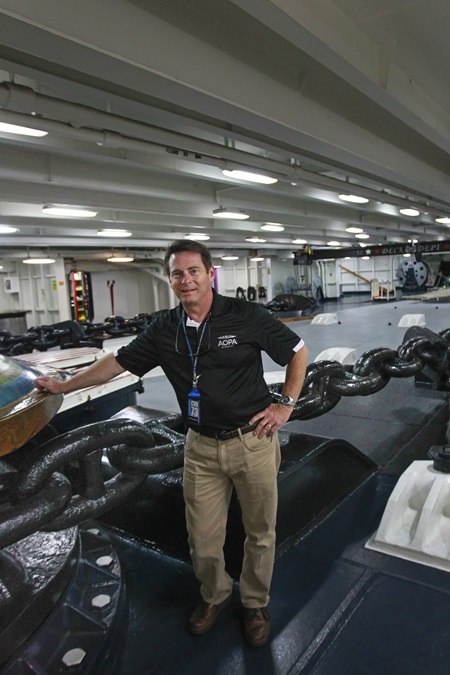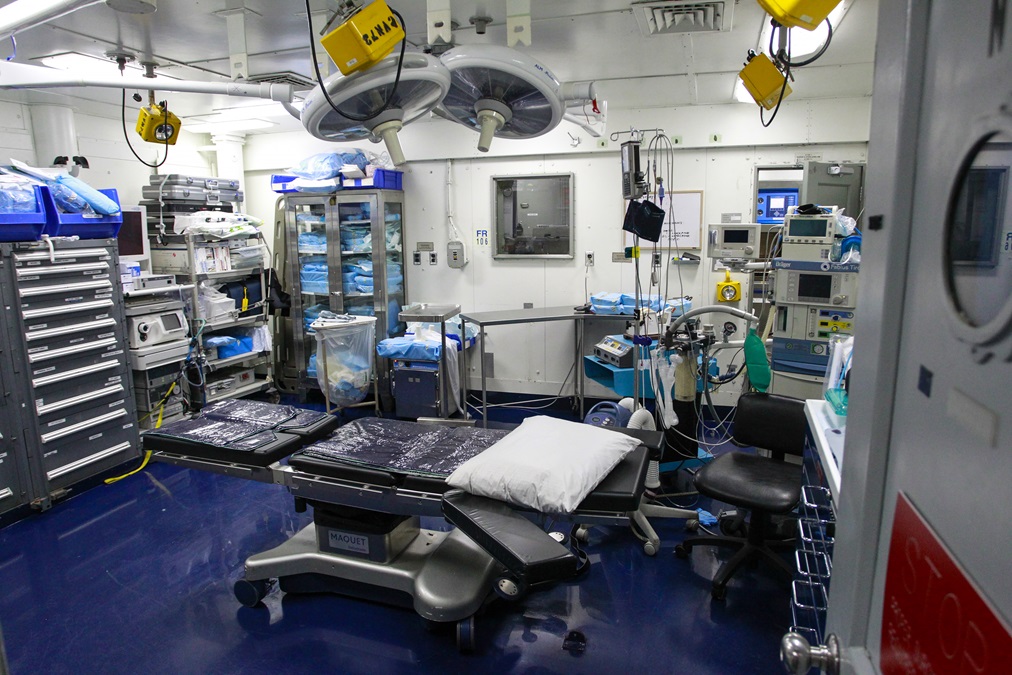What's it take to land on a carrier?
Dissecting a carrier landing—and making it easier
The next time you’re having trouble staying aligned with the runway on a windy day, consider the challenge of a naval aviator approaching an aircraft carrier at 130 knots with the runway moving to the right and forward at 20 knots. Land short, and you die. Land long, and you die of embarrassment later in the debrief.
One hundred and six years after Eugene Burton Ely made the first landing of an airplane on a ship, we’re still working to improve the reliability and safety of such a maneuver. Master of the understatement, Lt. Cmdr. Matthew Dominick, a U.S. Navy test pilot, said of carrier landings, “It’s dangerous.”
So, how do you do it?
Abeam the touchdown point, an F/A–18 Super Hornet pilot rolls into a 28-degree constant-bank turn until intercepting the approach path. The goal is to be on the back side of the power curve. Level off, but don’t balloon up. Power back and pitch over to set up an angle of attack of about 8 degrees to follow a glidepath of about 3.5 degrees. The “meatball” on the carrier’s deck, a Fresnel lens system, provides a visual indication of the glidepath. However, the whole thing is moving forward and to the right in an attempt both to provide a headwind to slow the approach speed and reduce the runway required, and to keep the angled deck pointed into the wind.
“The ship has a contract with me to put the wind right down the deck. I don’t like crosswinds. I don’t like varying speed. I want everything to be constant,” explains Capt. David Kindley, the Navy’s F/A–18 and EA–18G program manager, and a 30-year AOPA member.
And then there’s “the burble.”
The burble is a pocket of disturbed air behind the carrier’s island, the tall superstructure that houses the bridge, “pri-fly” (primary flight control), and the infamous “Vulture’s Row” where visitors and other pilots go to critique every landing as it happens. The Hornet enters the burble in the final seconds before touchdown, hoping to catch the Number 3 wire and make the perfect trap. Any of the four wires will do in a pinch, but you’ll hear about it later if you don’t hit the 3.
From 450 feet above the water, you’ll have about 18 seconds “in the groove,” the final approach portion of the arrival. “I put the white line on the deck between my legs,” says Dominick in the briefing room about the USS George Washington as it steams north and south off the Virginia coast.
“There’s three things to manage: the meatball, the lineup, and the AOA,” Kindley explains. Once the pilot has the jet configured to land, he uses power to make small vertical corrections and angle of bank adjustments to correct for lineup. The aircraft pitch stays at a fixed 8-degree angle of attack. Do all this correctly and the meatball stays centered, driving the arresting hook to a touchdown point just in front of the 3 wire.
The burble, of course, messes with a stabilized approach, requiring last-minute adjustments. All this occurs under the constant watch of the landing signal officer, aka Paddles, himself an experienced Hornet pilot standing near the aft end of the ship. If at any time he senses the arriving aircraft is not stable in pitch, roll, or airspeed, he will wave it off. He’s also the one who scores every landing—and, as a result, he is the most reviled member of the pilot crew. Often, the scores are posted for others to see. The grades range from the best being an “OK” then to “Fair”; any poor landing receives a “No Grade.” Pilots who score less than an “OK” usually feel the LSO is like the proverbial umpire who needs glasses.
According to Kindley, a pilot will make on average 200 to 300 minor corrections during those 18 seconds in the groove. Do it right, and the Hornet hits the deck at 800 feet per minute, the tailhook snagging the coveted Number 3. To be sure, the pilot goes to full power at touchdown. If he’s missed all the wires, he’ll fly away to try again, or maybe have to hit the tanker, which is always overhead whenever air operations are going on. Meanwhile, an H–60 helicopter with swimmers on board is hovering off the starboard side, ready to swoop in and pluck a pilot from the sea should an ejection or crash occur.
The U.S. Navy spends about $1 billion a year getting pilots qualified for carrier operations and keeping them current. Kindley and a team of Navy pilots, technicians, engineers, and software wizards want to reduce that cost and improve carrier landing efficiency and safety. Their solution is a flight control system software upgrade to the Super Hornets and the EA–18 Growlers that is designed to make carrier landings “monotonously repeatable.”
“Landing aboard the ship is an administrative task,” says Dominick, clinically. “It’s something that must be done so that we can focus on the real mission of surveillance, bombing, and all the other things expected of us.”
The carriers have an automated landing system (ALS) that allows for hands-off touchdowns. But it requires the ship’s precision radar, which can be finicky and unreliable. Additionally, the system requires an electronic link between the ship and the aircraft. “If you transmit, you can be found,” says Kindley. In addition to the requirement that numerous systems on two moving vessels work perfectly, the final approach for an ALS is much longer than for a normal landing. That eats up “seascape,” which can be critical in parts of the world where bodies of water are narrow or there are busy shipping lanes; it also delays aircraft recoveries, which can be critical during inclement weather or challenging military or political situations.
To provide a new level of assistance to the pilot, but allow him to continue hands-on flying, Kindley and his team have developed the Maritime Augmented Guidance with Integrated Controls for Carrier Approach and Recovery of Precision Enabling Technologies. Even by military standards, that’s a mouthful. They call it Magic Carpet.
The software upgrade decouples the Super Hornet and Growler’s fly-by-wire flight controls, allowing the computers to individually control each axis without disturbing the others. With conventional controls, when you roll into a turn, you need to add a little nose-up elevator, plus add some rudder to correct the yaw. Each minor change requires multiple control inputs.
When turning onto final, the Super Hornet pilot hits a button that turns on Magic Carpet. The software augments the flight controls, using rapid movements of flaps, elevator, and ailerons to provide whatever result the pilot wants; and it does so in combinations and at speeds no human could ever master. Once lined up with the meatball, for example, the pilot relaxes pressure on the stick and Magic Carpet, knowing the ship’s speed, will fly a perfect 3.5-degree glidepath to the deck, even though there is no electronic connection to the ship. If the airplane drifts low, the pilot applies back stick to align again and lets go. Autothrottles and flight controls compensate as necessary to keep the aircraft from yawing or rolling left or right as a result of the change.
The up and down movements are more like riding an elevator than the normal feeling of climbing or descending. “It’s like Pac-Man,” says Dominick. You push it right. It goes right, but without the pilot having to think about what other inputs might be needed to keep the aircraft aligned with the ship.
Instead of 200 to 300 corrections in the groove, pilots using Magic Carpet the first time need about 20 inputs, say Kindley. With practice, it’s fewer than 10. The precision of the landings goes up, too. Tests without Magic Carpet showed pilots landing within plus or minus 40 feet of the same spot. With Magic Carpet, the threshold narrowed to just plus or minus 18 feet.
AOPA Pilot was invited to the George Washington to witness the final day of a five-day sea trial of Magic Carpet’s latest software version. The crews flew 598 approaches with only one miss during the trial, and this was with test pilots purposefully aggravating the system and also flying with and without head-up display (HUD) guidance, with and without autothrottles, single-engine, and at times with compromised flight controls.
Kindley and company are quick to point out this is not an automated landing system. The pilot is hands on, flying the entire time. But Magic Carpet frees up mental processing power, allowing the pilot to increase situational awareness and make better decisions. “There are two kinds of military pilots,” says Kindley. “Those who see themselves operating a weapons system and there are those who are there to fly.”
“I’m in the second group,” says the former Mooney owner. “Whether it’s a Cessna 150 or a Super Hornet, I want to fly it.” Magic Carpet keeps the pilot flying and in the loop.
Kindley plans to introduce Magic Carpet to the fleet in 2017 for more feedback while he and the team develop system redundancies that will allow Magic Carpet to be a fully functioning and fully trusted system for the Super Hornets and Growlers in 2019. The next generation of fighters, the F–35 Lightning, will come with Magic Carpet technology already in place.
The result, Kindley believes, will be less time and money spent on introducing pilots to carrier landings and keeping them current. He continues to gather more data, but he is convinced that over time safety will improve and, thanks to more predictable landings, maintenance on both the aircraft and the ship can be reduced. Magic Carpet surely seems to hold great promise. “Monotonous,” though? That’s a tall order.
Email thomas.haines@aopa.org

